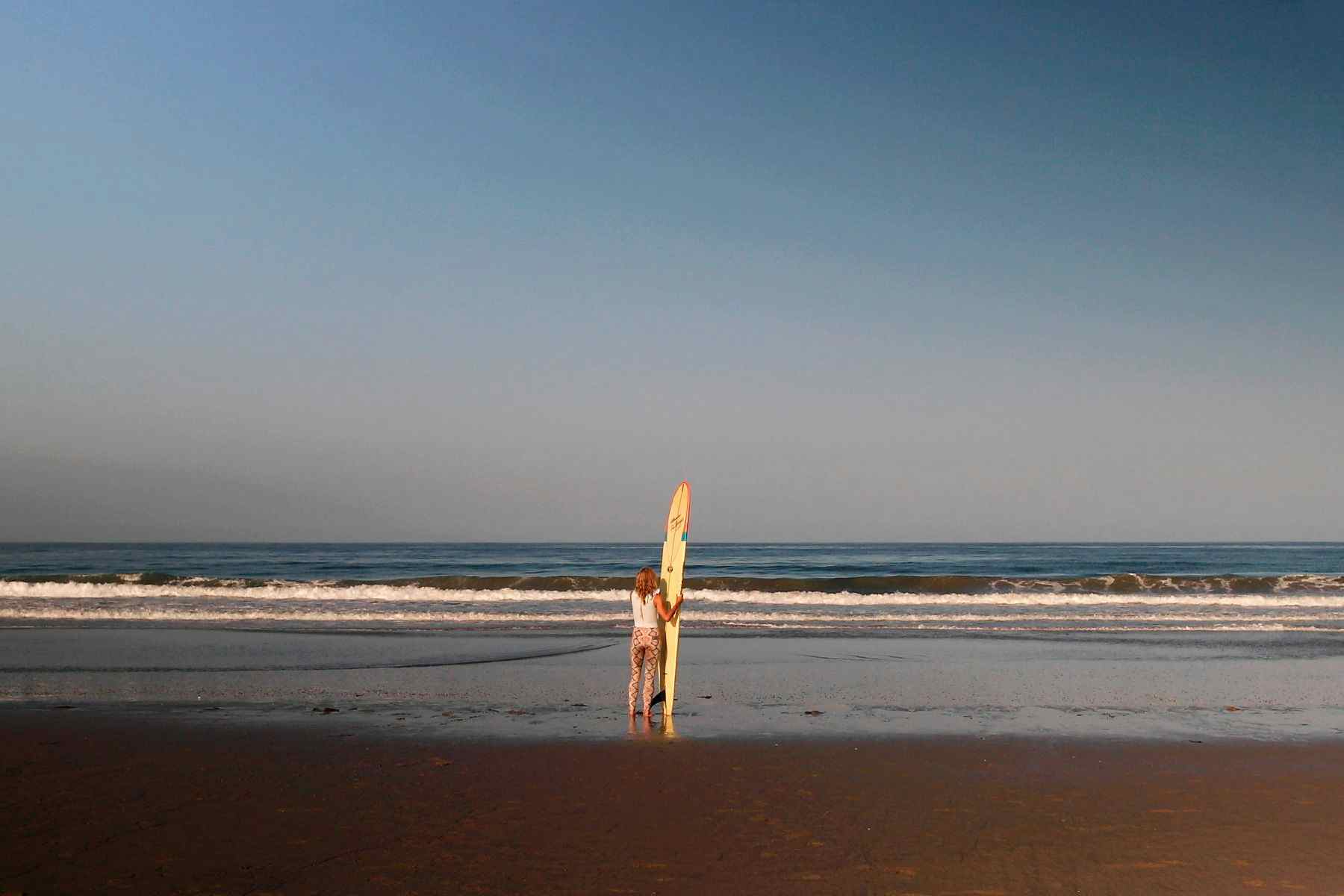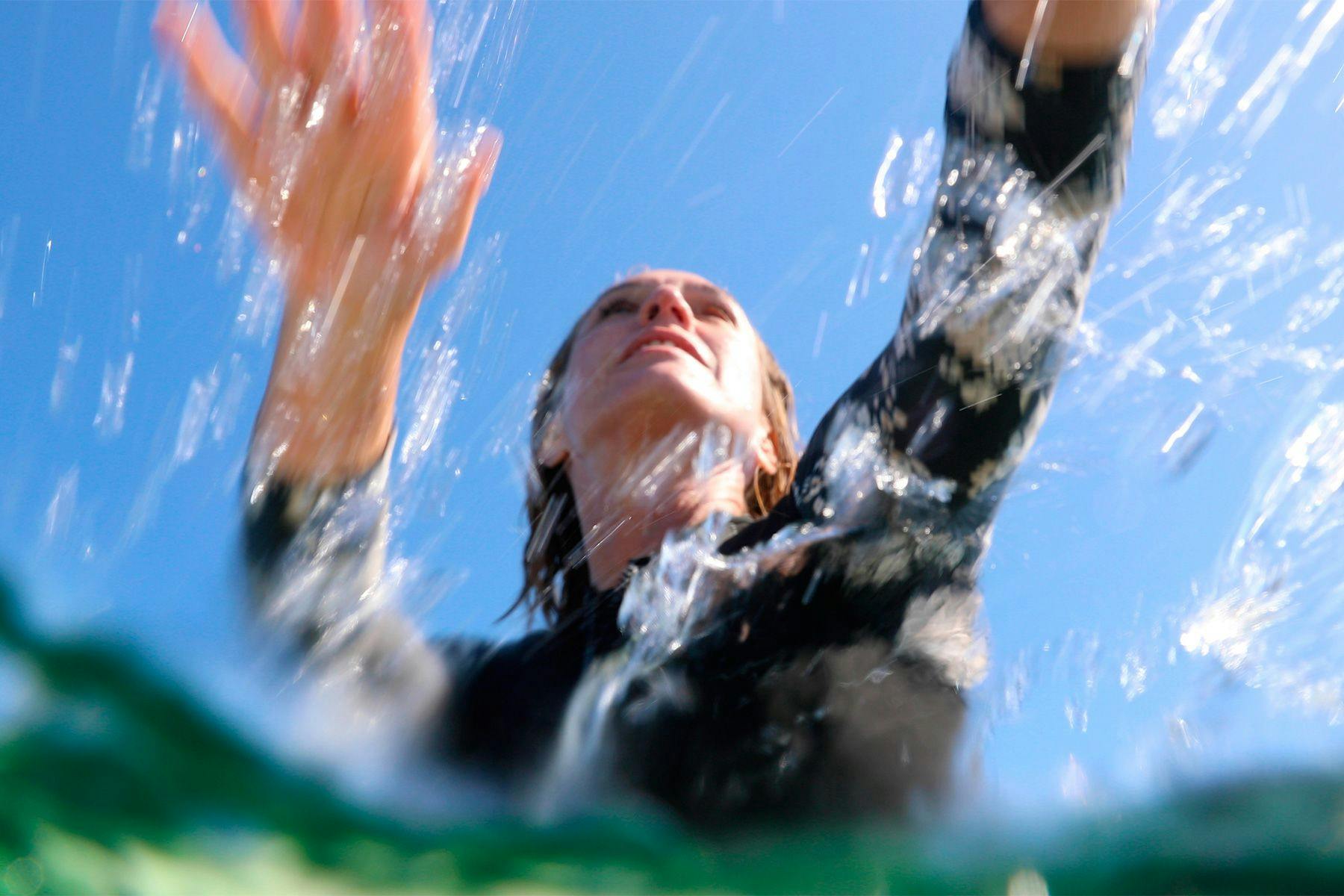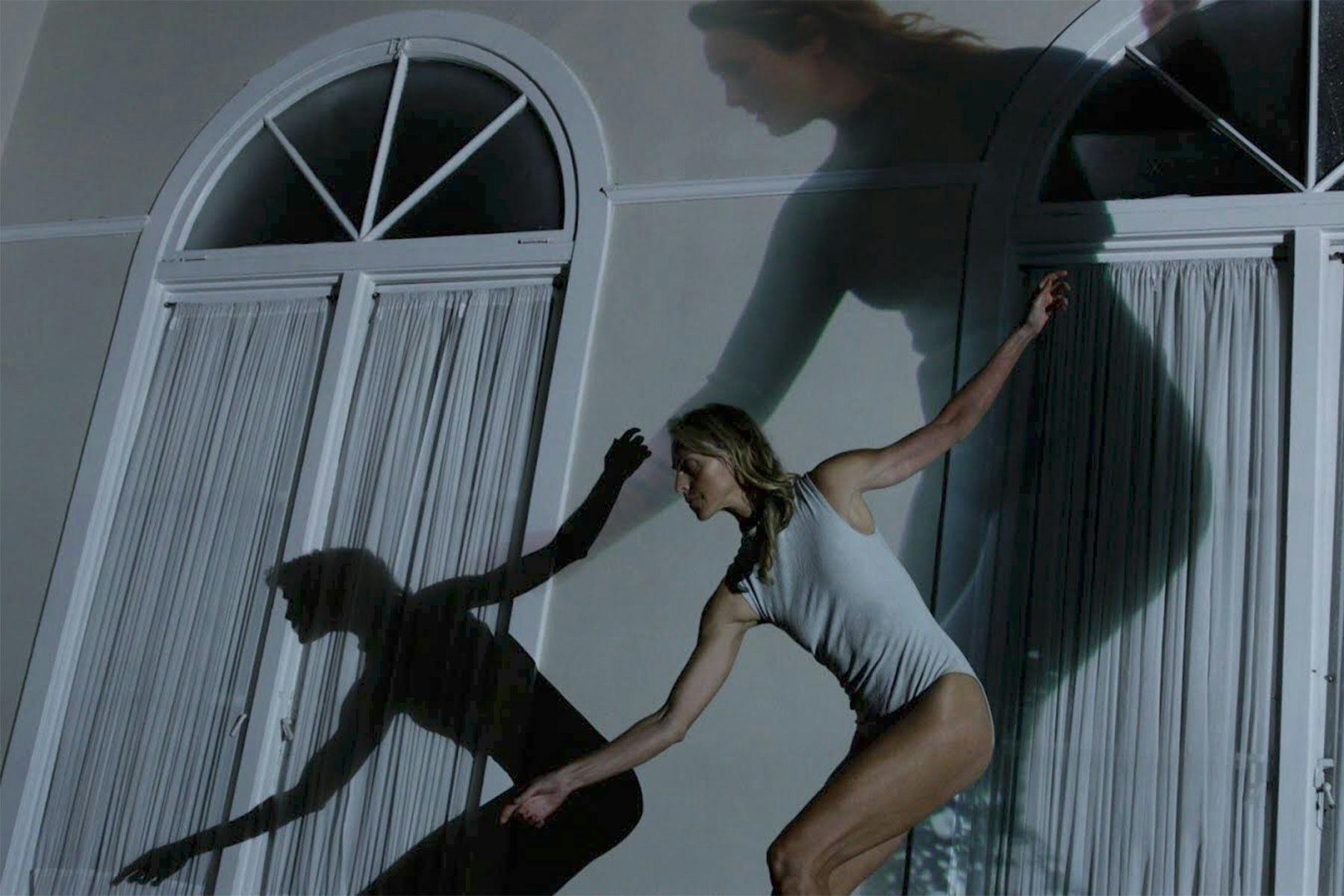Surf MoviesUPWELL: Surfing and Dancing Through Grief

The mere thought of losing a loved one evokes a much more poignant and visceral pain than the thought of losing our own life. So when existence cycles, saying goodbye to someone we hold dear turns into a process more than an action.
Like many of us, J’aime Morrison, a Professor of Theatre and Movement at California State University Northridge, has been submerged into the labyrinthian waters of grief following the death of her husband, finding in surfing and dance the means to break through to the surface. Her upcoming short film, UPWELL, composes a visual intersection of body movements to translate her experience with grieving, illustrating the role of both art forms in the journey.
“I find myself turning to surf metaphors as I go through this process – that grief really does come in waves and I must learn to ride them. What is grief but an undercurrent? Wave after wave after wave after wave after wave; an internal squall. Grief is complete submersion – it’s like falling overboard in the freezing Irish Sea and not knowing how to swim. In the beginning, I longed to be pulled down to the depths of the sea, to surrender to the undertow. Author Julian Barnes used such imagery when describing how he felt after losing his wife, “I can never go deep enough to retrieve my lost love, like Orpheus did for his Euredice, so I must bring him back a different way: in dreams and memories and other forms of mourning.” This is my mourning surf. Surfing has set me in motion – through the precarious, slippery, ever-shifting ground of a wave, surfing has taught me how to thrust forward into the curl of the unknown. In surfing through grief I have learned that I must risk the ride on the eddies, crests and curls of experience despite their inherent peril.”

Although raised in Santa Barbara by a surfer father, J’aime always opted for dance classes over surf lessons, and it wasn’t until her mid-thirties, when she moved back to California after earning her Ph.D. in Dance from New York University, that she finally tried surfing.
“I wasn’t meeting many women friends and wanted to create a sense of community in my new city. I joined a women’s surf class given by the city of Santa Monica. We were all basically beginners and we had a blast learning together. Many of us are still friends and surf together.”
Back in August 2015, J’aime’s husband, Jim, passed away of a brain tumor after battling the disease for years. During this period, J’aime hadn’t surfed or been in the water, but two weeks after his death something urged her to paddle out.
“There happened to be a lot of women in the water that day and one by one they silently paddled over to me and hugged me and moved on to catch waves. It was this silent ritual that was repeated over and over. No words were exchanged. It was such a beautiful moment of grief and strength and community.”
In one of the surf sessions that followed, J’aime met and befriended a former dancer with the San Francisco Ballet. By this time, the inherent connections between surfing and dancing had already been floating in her mind; she understood her wish to express this link either through her research, or creatively. So after receiving a sabbatical from CSUN, J’aime decided that making a short film would be a good way to dive deeper into her own process of grieving.
“I was watching videos of women longboarders – namely Leah Dawson and Kassia Meador – and using their moves to inspire choreography in the studio. I wanted to feature surfing within an aesthetic context and I wanted to create choreography that was surf inspired.”
As part of her grief process, J’aime embarked on a solo surf trip to Costa Rica. On her plane was none other than Kassia Meador herself. In a serendipity-fuelled impulse, she invited Meador to take part in the film and six months later, on a foggy Malibu morning, she filmed Kassia dancing on the waves.
“In the film Kassia’s image is projected on the walls of the dance studio and Rachel (the dancer) ‘dances’ with the surfer’s image. To me, Kassia surfs into the room and helps the dancer move forward and find strength. She is like a vision of hope.I loved all of our footage of Kassia who is a beautiful surfer, but I was drawn to use footage that was blurry, or a bit washed out or that had a lot light flares, to create an otherworldly quality about her. She becomes the embodiment of surfing and surfing really saved me and I wanted to honor that.”

Originally titled Undertow, J’aime wrote the script for Upwell with lots of underwater shots as a metaphor for the way she felt totally and utterly submerged by grief, using a section with the main character being tossed around by the whitewater and losing her board as a symbolization of the lost partner – which later appears propped up in the dance studio representing a revenant; a presence.
“As I began to shoot the film and move through the process of grief and mourning, actually through the process of working on the film, I began to stabilize a bit. My cinematographer Sarah Lee mentioned the term “upwelling” in a passing reference and it stayed with me. I looked it up in the dictionary and it refers both to the ocean – when new water comes in to replace old water often bringing new nutrients into the seascape and it also referenced the welling up of emotions. So I changed the name midcourse and it felt more hopeful.”
Another aim of J’aime’s was to use different sequences in the film to express that grief is not a linear process but rather comes in waves. She did so by intercutting ocean sequences into the dance segment as flashbacks to earlier moments in the water, embracing the wordlessness and simultaneity of film as a medium and trying to juxtapose images and sounds in a way that it touches both imagination and emotion.
“The ocean itself became a kind of character for me in the film. At times rough and grey, at other times a luminous green. Whitewater, waves, underwater shots, drone shots of the ocean all of these different perspectives of the sea surround the woman as she moves through the journey. I think everyone who sees the film will have their own ideas about it and even if they don’t know that it is about grief specifically, I feel that we have created a haunting quality in the film through the images and sound.”
This being J’aime’s first venture into filmmaking, there was no shortage of challenges, from dealing with underwater footage, drone shots, and projections…
“When I first tried to project Kassia’s image on Rachel the dancer’s body the camera would not read the projected image. I use projections all the time in my theatrical and dance work but bringing in the element of film added another level of complexity. I upgraded to a better projector and camera and was able to get the two machines to talk to each other.”
… to scoring the music.
“I puzzled over how I wanted the images to sound, how to synchronize the rhythm of waves with the rhythms of grief. When we shot the surf footage for the film, the ocean water rushing through the underwater camera housing made a distinctive, haunting sound. I asked the composer to experiment with these sounds in the composition and he ended up using them to underscore the first section. Even if they are not heard directly, the sounds are a presence in the score and they lend the music depth and dimension – an undertone.”
Another challenging aspect that she couldn’t have predicted was teaching her surfer girlfriends the choreography to be performed on their surfboards while in the water. Despite having rehearsed in and out of the water – walking into the frame, standing still, and paddling out and into formation – she would lose half the group when a good set would roll through. In the end, though, the very sense of companionship that lured J’aime back into the water was what made the choreography work.
“The day of the shoot was very sunny after a month of coastal gloom. I heard someone say – Jim is watching us – and I teared up. We really did feel his energy that day.”

J’aime will be submitting UPWELL to surf film festivals worldwide. She is also in the process of launching a blog called “Mourning Surf” about the power of the ocean and how surfing has helped her to move through her grief.